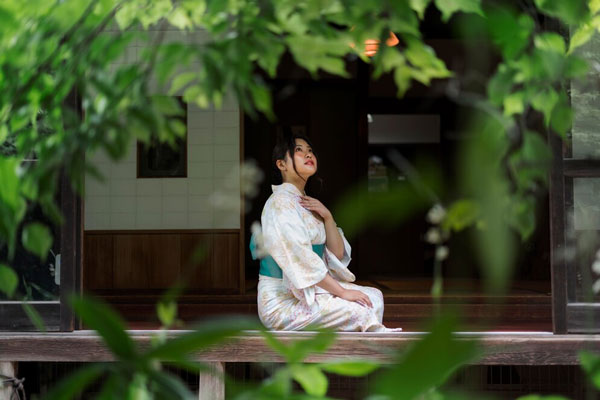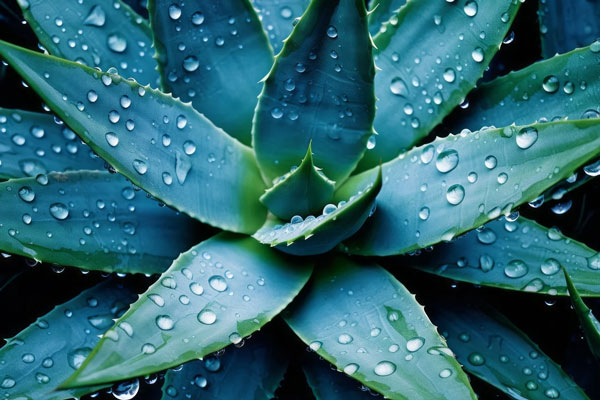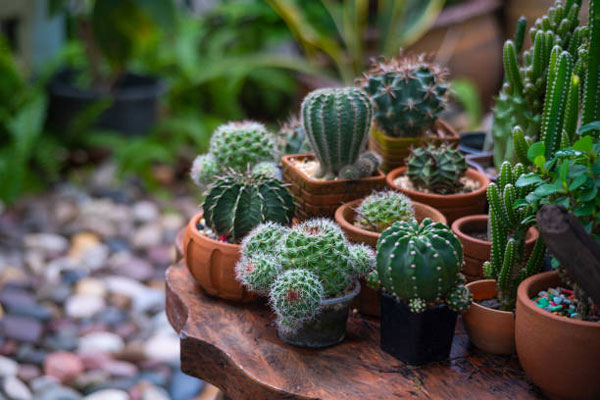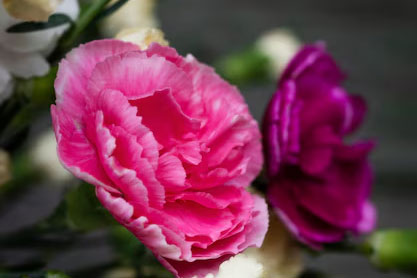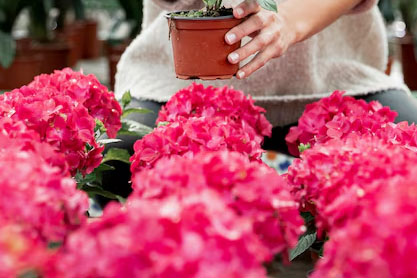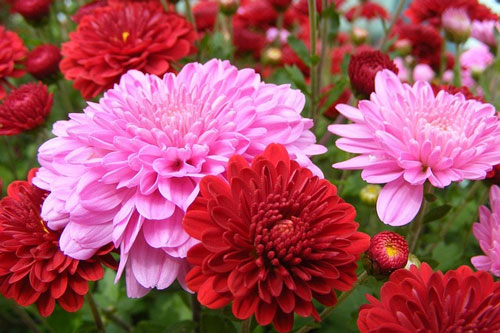Σχεδιάζοντας έναν κήπο με βότανα
Ο σχεδιασμός ενός βοτανόκηπου μπορεί να ποικίλλει ανάλογα με τον διαθέσιμο χώρο και τις προσωπικές
προτιμήσεις. Ωστόσο, υπάρχουν ορισμένες βασικές αρχές που μπορούν να σας βοηθήσουν να μεγιστοποιήσετε
την ομορφιά και τη λειτουργικότητα του κήπου σας.
1. Ιδανική τοποθεσία
Τα βότανα χρειάζονται συνήθως 6 έως 8 ώρες ήλιο την ημέρα για να αναπτυχθούν ιδανικά, επομένως είναι
σημαντικό να επιλέξετε μια τοποθεσία που δέχεται αρκετό άμεσο ηλιακό φως. Αν έχετε μικρό κήπο, μια
ηλιόλουστη bitwin περιοχή είναι ιδανική, αλλά αν ζείτε σε διαμέρισμα ή έχετε βεράντα, τα βότανα μπορούν
επίσης να αναπτυχθούν καλά σε μπαλκόνια ή παράθυρα που δέχονται επαρκή φωτισμό.
2. Γλάστρες και δοχεία
Εάν δεν έχετε μεγάλο χώρο στο έδαφος, τα βότανα είναι ιδανικά για καλλιέργεια σε γλάστρες ή
ζαρντινιέρες. Επιπλέον, η χρήση δοχείων σας επιτρέπει να μετακινείτε εύκολα τα φυτά για να
εκμεταλλευτείτε το ηλιακό φως ή να τα προστατεύσετε από ακραίες καιρικές συνθήκες. Οι πήλινες, ξύλινες ή
μεταλλικές γλάστρες είναι δημοφιλείς και προσφέρουν εξαιρετικό αερισμό για τις ρίζες.
Για να μεγιστοποιήσετε τη χρήση του χώρου, μπορείτε να επιλέξετε έναν κάθετο σχεδιασμό, χρησιμοποιώντας
ράφια ή δομές στήριξης στις οποίες μπορείτε να κρεμάσετε γλάστρες. Μπορείτε επίσης να ομαδοποιήσετε
πολλά βότανα σε μία μεγάλη γλάστρα, αρκεί να βεβαιωθείτε ότι έχουν αρκετό χώρο για να αναπτυχθούν.
3. Διανομή και συνδυασμός φυτών
Όταν σχεδιάζετε το σχεδιασμό του κήπου σας, είναι σημαντικό να εξετάζετε τη συμβατότητα των φυτών.
Ορισμένα βότανα αναπτύσσονται πιο έντονα από άλλα και μπορεί να ανταγωνίζονται για χώρο και θρεπτικά
συστατικά αν φυτευτούν μαζί. Μια καλή προσέγγιση είναι η ομαδοποίηση βοτάνων με παρόμοια ανάπτυξη και
παρόμοιες ανάγκες σε φως και νερό.
Για παράδειγμα, τα μεσογειακά βότανα, όπως το δεντρολίβανο, το θυμάρι και η ρίγανη, προτιμούν ξηρό
έδαφος και άφθονο ήλιο, οπότε είναι ιδανικά για κοινή καλλιέργεια. Από την άλλη πλευρά, βότανα όπως ο
βασιλικός και ο κόλιανδρος απαιτούν περισσότερο νερό και υγρότερο έδαφος, οπότε θα επωφεληθούν από την
ομαδοποίησή τους.
Συνιστώμενα αρωματικά βότανα
Υπάρχουν πολλές ποικιλίες αρωματικών βοτάνων, η καθεμία με τις δικές της μαγειρικές, φαρμακευτικές και
διακοσμητικές χρήσεις. Μερικά από τα πιο συνηθισμένα βότανα και τα κύρια χαρακτηριστικά τους
περιγράφονται παρακάτω:
1. Βασιλικός (Ocimum basilicum)
● Χρήσεις: Ο βασιλικός είναι ένα από τα πιο δημοφιλή βότανα στη μεσογειακή
κουζίνα και είναι
απαραίτητος για την παρασκευή πιάτων όπως η σαλάτα caprese, το πέστο και τα ζυμαρικά. Έχει
επίσης αντιφλεγμονώδεις ιδιότητες και χρησιμοποιείται σε αφεψήματα για την ανακούφιση από
πεπτικά προβλήματα.
● Καλλιέργεια: Ο βασιλικός προτιμά πλούσιο σε θρεπτικά συστατικά, καλά
στραγγιζόμενο έδαφος και
άμεσο ηλιακό φως. Είναι ετήσιο φυτό, επομένως θα πρέπει να μεταφυτεύεται κάθε χρόνο.
● Φροντίδα: Απαιτεί τακτικό πότισμα, αλλά αποφύγετε την υπερβολική διαβροχή του
εδάφους. Το
τσίμπημα των άκρων των κλαδιών θα ενθαρρύνει την πλούσια ανάπτυξη.


2. Μέντα (Mentha spp.)
● Χρήσεις: Η μέντα είναι γνωστή για το αναζωογονητικό της άρωμα και
χρησιμοποιείται σε διάφορα
ποτά (όπως μοχίτο ή τσάι), πιάτα και επιδόρπια. Έχει επίσης πεπτικές ιδιότητες και είναι χρήσιμη
για την αντιμετώπιση των πονοκεφάλων.
● Ανάπτυξη: Η μέντα είναι πολυετές φυτό που εξαπλώνεται γρήγορα. Καλό είναι να
φυτεύεται σε
γλάστρα για να ελέγχετε την εξάπλωσή της.
● Φροντίδα: Η μέντα προτιμά υγρό έδαφος και μερική σκίαση. Είναι ανθεκτική και
εύκολη στην
καλλιέργειά της, αν και χρειάζεται τακτικό κλάδεμα για να μην γίνει παρεμβατική.
3. Δενδρολίβανο (Rosmarinus officinalis)
● Χρήσεις: Το δενδρολίβανο είναι ένα έντονα αρωματισμένο βότανο που
χρησιμοποιείται για να
καρυκεύει το κρέας, το ψάρι και το ψωμί. Χρησιμοποιείται επίσης καζίνο στην αρωματοθεραπεία για
τις διεγερτικές του ιδιότητες.
● Καλλιέργεια: Ένα πολυετές φυτό χαμηλής συντήρησης που προτιμά τα καλά
στραγγιζόμενα εδάφη και
τις ηλιόλουστες συνθήκες.
● Φροντίδα: Το δενδρολίβανο είναι ανθεκτικό στην ξηρασία, οπότε δεν απαιτεί
συχνό πότισμα.
Ωστόσο, φροντίστε να το κλαδεύετε τακτικά για να διατηρείτε το σχήμα του και να ενθαρρύνετε την
υγιή ανάπτυξη.

4. Θυμάρι (Thymus vulgaris)
● Χρήσεις: Το θυμάρι είναι ένα ευπροσάρμοστο βότανο που χρησιμοποιείται σε
μαγειρευτά, σούπες
και πιάτα με κρέας. Εκτός από τις μαγειρικές του χρήσεις, το θυμάρι έχει αντισηπτικές ιδιότητες
και χρησιμοποιείται σε αφεψήματα για την ανακούφιση των αναπνευστικών προβλημάτων.
● Ανάπτυξη: Αυτό το πολυετές φυτό ευδοκιμεί σε φτωχά, ξηρά εδάφη, καθιστώντας
το ιδανικό για
κήπους με χαμηλή συντήρηση.
● Φροντίδα: Το θυμάρι χρειάζεται λίγο νερό και πρέπει να φυτεύεται σε
ηλιόλουστο σημείο.
Αναπτύσσεται σε μικρές συστάδες και εξαπλώνεται σταδιακά, καθιστώντας το εξαιρετική επιλογή για
εδαφοκάλυψη.
5. Κορίανδρος (Coriandrum sativum)
● Χρήσεις: Ο κόλιαντρο είναι ένα δημοφιλές βότανο στη λατινοαμερικάνικη και ασιατική
κουζίνα. Τα φύλλα
και οι σπόροι του (γνωστοί ως κόλιανδρος) χρησιμοποιούνται για να αρωματίσουν σάλτσες, γκουακαμόλε, κάρι
και σαλάτες.
● Ανάπτυξη: Ο κόλιανδρος είναι ετήσιο φυτό που προτιμά υγρό, πλούσιο έδαφος και
αναπτύσσεται καλύτερα σε
δροσερά κλίματα.
● Φροντίδα: Φροντίστε να διατηρείτε το χώμα υγρό, ιδίως κατά τους θερμότερους μήνες,
και κόψτε τα
λουλούδια για να παρατείνετε τη διάρκεια ζωής του φυτού.
6. Λεβάντα (Lavandula spp.)
● Χρήσεις: Αν και είναι περισσότερο γνωστή για το άρωμα και τα άνθη της, η λεβάντα έχει
επίσης
μαγειρικές χρήσεις σε επιδόρπια, ποτά και πιάτα με κρέας. Στη φυσική ιατρική, χρησιμοποιείται για τις
ηρεμιστικές της ιδιότητες.
● Καλλιέργεια: Η λεβάντα είναι πολυετές φυτό που αναπτύσσεται καλύτερα σε καλά
στραγγιζόμενο έδαφος και
σε άμεσο ήλιο.
● Φροντίδα: Είναι ανθεκτικό στην ξηρασία και χρειάζεται λίγο νερό. Το τακτικό κλάδεμα
είναι σημαντικό
για τη διατήρηση του σχήματός του και την προώθηση της ανθοφορίας.
Γενική φροντίδα για έναν κήπο αρωματικών βοτάνων
Η διατήρηση ενός υγιούς κήπου αρωματικών φυτών δεν απαιτεί μεγάλη προσπάθεια, αλλά κάποια βασική
φροντίδα είναι απαραίτητη για να διατηρήσετε τα φυτά να αναπτύσσονται δυνατά και να παράγουν αρωματικά
φύλλα.
1.Επαρκής άρδευση
Το πότισμα είναι μια από τις πιο σημαντικές πτυχές της φροντίδας των βοτάνων. Τα περισσότερα βότανα
προτιμούν τα καλά στραγγιζόμενα εδάφη, οπότε είναι ζωτικής σημασίας να αποφεύγεται η υφαλμύρωση. Σε
θερμά κλίματα, ποτίστε τα φυτά νωρίς το πρωί ή αργά το απόγευμα για να αποφύγετε τη γρήγορη εξάτμιση.
2.Γονιμοποίηση
Αν και τα βότανα δεν απαιτούν μεγάλες ποσότητες λίπανσης, είναι ωφέλιμο να προσθέτετε οργανικό κομπόστ
στο έδαφος μία ή δύο φορές το χρόνο για να το διατηρείτε πλούσιο σε θρεπτικά συστατικά. Αποφύγετε την
υπερβολική χρήση χημικών λιπασμάτων, καθώς μπορεί να αλλοιώσουν τη γεύση των βοτάνων.
3. Κλάδεμα και συγκομιδή
Το τακτικό κλάδεμα είναι απαραίτητο για να διατηρούνται τα χόρτα πλούσια και να ενθαρρύνεται η νέα
ανάπτυξη. Ο καλύτερος τρόπος για τη συγκομιδή των φύλλων είναι να κόψετε τα ανώτερα κλαδιά, γεγονός που
θα βοηθήσει επίσης το φυτό να διακλαδωθεί και να αναπτυχθεί πυκνότερα. Στην περίπτωση βοτάνων όπως ο
κόλιανδρος ή ο βασιλικός, συνιστάται η αφαίρεση των λουλουδιών για να αποφευχθεί η πικρία του φυτού.
4. Έλεγχος παρασίτων
Τα αρωματικά βότανα τείνουν να είναι λιγότερο ευαίσθητα στα παράσιτα από άλλα φυτά, χάρη στα αιθέρια
έλαια τους, αλλά μπορούν ακόμα να προσελκύσουν αφίδες, σαλιγκάρια ή ακάρεα αράχνης. Τα βιολογικά
εντομοκτόνα και η χρήση συνοδευτικών φυτών μπορούν να βοηθήσουν να κρατηθούν αυτοί οι εισβολείς μακριά.

Οι κήποι βοτάνων προσφέρουν έναν θαυμάσιο συνδυασμό λειτουργικότητας και αισθητικής, μετατρέποντας
κάθε μικρό χώρο, είτε πρόκειται καζίνο για μπαλκόνι, αίθριο ή λαχανόκηπο, σε μια πράσινη γωνιά
γεμάτη φρέσκα αρώματα και έντονες γεύσεις. Ακολουθώντας τις βασικές αρχές φροντίδας, μπορείτε να
απολαμβάνετε τα δικά σας φρέσκα βότανα για μαγείρεμα, αφεψήματα και πολλά άλλα, δημιουργώντας
παράλληλα ένα φυσικό περιβάλλον που σας συνδέει με τη γη και την ευεξία.
Μάθετε περισσότερα






